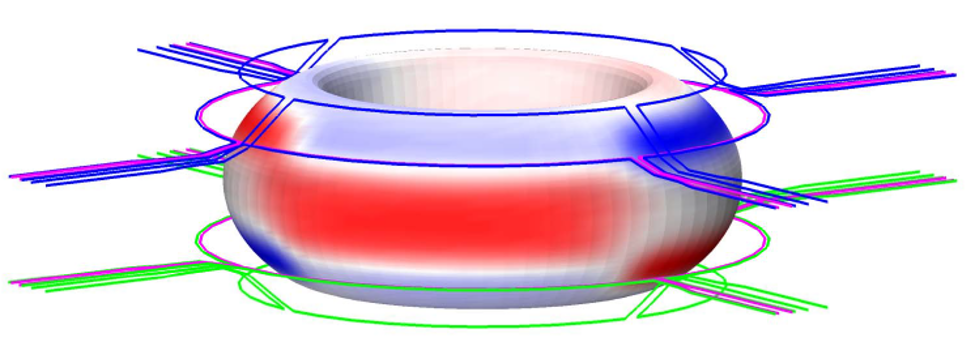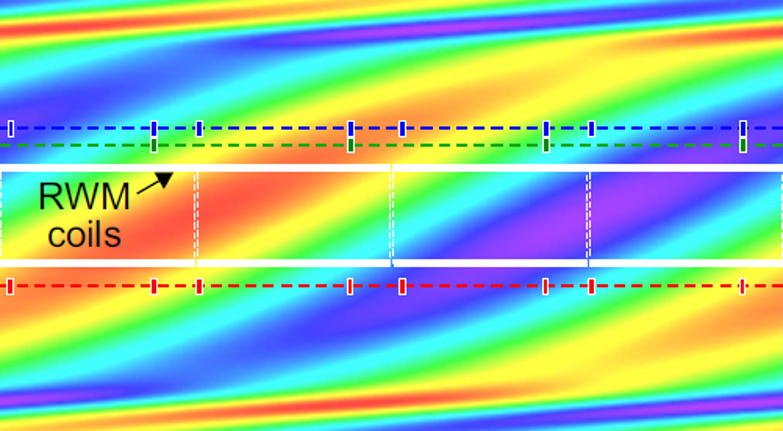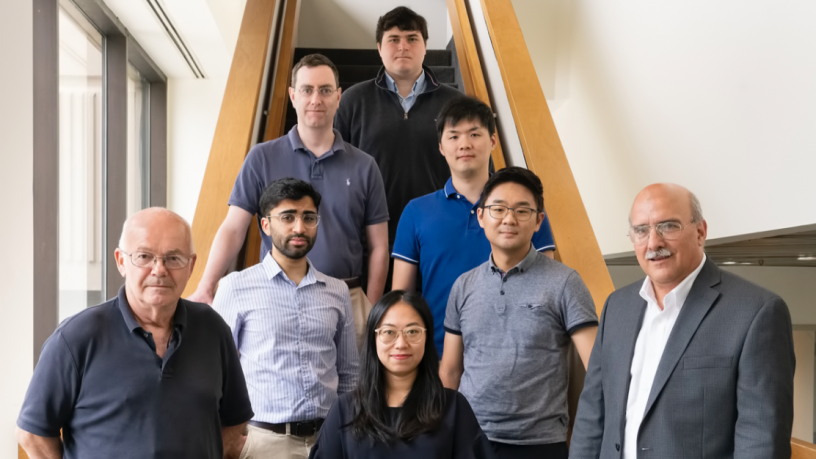Understanding the chain of events that leads to abrupt plasma terminations is a focus of Columbia tokamak research.
Image Carousel with 3 slides
A carousel is a rotating set of images. Use the previous and next buttons to change the displayed slide
-
Slide 1: Magnitude of the applied normal magnetic field on the KSTAR plasma surface
-
Slide 2: Calculated perturbed poloidal magnetic field in the KSTAR device
-
Slide 3: Research members in the disruption prediction area.

Magnitude of the applied normal magnetic field on the KSTAR plasma surface

Calculated perturbed poloidal magnetic field in the KSTAR device

Research members in the disruption prediction area.
Plasmas in fusion-energy producing devices are gases heated to millions of degrees that can carry millions of amperes of current. These superhot plasmas must be kept away from material surfaces of the vacuum vessel that contains them by using strong magnetic fields. When the gas becomes unstable it can touch the chambers’ walls, quickly cooling the plasma and disrupting fusion reactions. Such disruption could potentially harm the walls of future fusion-producing devices. Research in this area is focused on developing ways to predict these instabilities so they can be avoided.
Disruption Prediction Research
Research in disruption prediction in tokamaks focuses on developing ways to predict harmful instabilities so they can be avoided.
This research begins with analysis of the chains of events that lead to disruptions tokamaks, and forecasting the onset of such events. This effort includes using diagnostic data and computer codes to reproduce the equilibrium state of the plasma, and to calculate its stability. Physics models or machine learning algorithms of the various processes are then implemented in real-time for disruption prediction.
Realizing this goal will require implementation and analysis of real-time diagnostic capabilities on various international tokamaks for disruption prediction and avoidance. This effort will bring significant new capabilities allowing real-time measurements of key plasma parameters such rotation profile, magnetic field pitch angle and internal magnetic perturbation profiles, electron temperature and electron temperature fluctuation profiles, evolution and decomposition of rotating magnetohydrodynamic modes, and energetic particle-driven mode onset and evolution. These measurements will allow the physics models to assess how close the plasma state is from being disrupted.
Finally, creation and implementation of control algorithms will steer the plasma away from possible disruption to preferred, sustained operational states.
National Spherical Tokamak Experiment
Disruption prediction work at Columbia began at the NSTX-U facility, where novel computational frameworks were deployed to predict the impending disruption event.
International Tokamaks
Prediction work has since been exported to international facilities to validate the methods pioneered at NSTX-U.